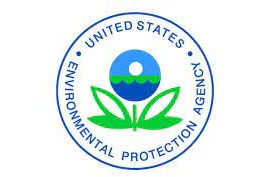
Several environmentalist groups are suing the EPA for not regulating water industry puts in our water.
Several environmental groups are suing federal regulators over what they say is a failure to set safe limits on harmful chemicals pouring into waterways from refineries, including eight facilities in Louisiana that are considered among the nation’s top polluters. The lawsuit, filed Tuesday in the U.S. 9th Circuit Court of Appeals in San Francisco, says the U.S. Environmental Protection Agency has done little to curb the half billion gallons of wastewater that flows from refineries to rivers, estuaries and other public waterways each day. While the tools for treating these pollutants have become better and cheaper over the years, the EPA still holds refineries to standards set decades ago, said Andrew Whitehurst, the water program manager for Healthy Gulf, one of the 13 groups filing the suit. “There really is no excuse,” he said Monday. “We should be holding these industries to the best available pollution standards, but the EPA has not done that.” The EPA did not immediately respond to a request for comment. The agency does not typically discuss issues involving litigation.
nola.com

Environmental Integrity Project
Citing the Clean Water Act the group says many common discharge items and not included in the regulations.
The U.S. Clean Water Act requires the EPA to set limits on refinery pollutants and update them every five years as treatment technology improves. But the EPA has never set limits for several common refinery pollutants, including selenium, benzene, mercury and cyanide, according to the environmental groups. The lawsuit challenges the EPA’s decision in late January to delay updating what the groups say are outdated and weak water pollution control technology standards, called “effluent limitation guidelines,” for seven industrial sectors, including refineries and chemical manufacturers. “Regardless of where a person lives, they should be able to fish or swim in their local river or lake without fear of getting sick from pollution,” said Jennifer Peters, the national water programs director for Clean Water Action, one of the groups named in the lawsuit.
Louisiana has 8 of the problem sites.
A recent study ranked eight refineries in Louisiana among the nation’s top oil operations that pollute public waterways. The Marathon refinery in Garyville ranked fourth and the Phillips 66 refinery in Lake Charles ranked seventh for releases of nickel. Marathon’s refinery ranked 8th for selenium discharges, and the Exxon Mobil refinery in Baton Rouge ranked 10th, according to the Environmental Integrity Project study. Nickel and selenium are toxic metals that can mutate fish, harm reproductive systems and travel up the food chain to people. The Citgo refinery in Lake Charles and Chalmette Refinery near New Orleans ranked 8th and 10th for releases of nitrogen, a nutrient that feeds algal blooms and is the main contributor to the Gulf of Mexico’s low-oxygen ‘dead zone.’ In 2021, Louisiana’s 14 refineries released a combined total of 2.4 million pounds of nitrogen, 9,990 pounds of selenium and 1,473 pounds of nickel into waterways, according to the EIP. Most Louisiana refineries named in the study did not respond to requests for comment. In a statement, Exxon Mobil said its refineries operate “in compliance with stringent local, state and federal regulations, and are always working to improve environmental performance.” Most U.S. refineries are very old, averaging 74 years, and many have not adopted new technology, the Environmental Integrity Project says. The Exxon refinery in Baton Rouge started operations in 1909. The Marathon refinery, at almost 50 years old, is one of Louisiana’s youngest.
A case where common agents still can do damage.



